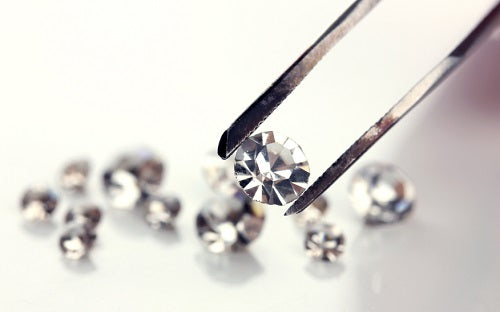
What is a 60/60 ideal cut diamond?
Hi Danny, I’m in the process of shopping for a diamond engagement ring, and need you to settle an argument that I’ve been having with a co-worker, who purchased what is referred to as a 60/60 ideal cut diamond for his wife a few years ago… he insists that the combination of a 60% table diameter with a 60% total depth measurement, automatically creates a crown and pavilion angle offset that produces the best volume of light return and sparkle factor; while the impression that I get is that the table and depth measurements represent only a piece of the puzzle, and that the crown and pavilion angle measurements are not necessarily dictated by the table and depth measurements; so it is not as simple as merely finding a diamond with a total depth of 60% and a table diameter of 60%; which one of us is right? Don’t hold back, I’ve got twenty bucks riding on this! – Mark M.
Debunking the Myth of the 60/60 Ideal Cut Diamond:
The concept behind the “60/60 ideal cut diamond” is that by cutting the diamond so that the table diameter and depth measurements are both 60% that the crown and pavilion sections of the diamond will somehow magically be exactly what they have to be, in order for the highest volume of light return and sparkle factor to be achieved.
However a quick search for diamonds with 60% table diameter and 60% total depth measurements on any of the web sites that provide the ability to search the virtual inventory of diamonds that is used by the trade to market diamonds globally, and a review of the crown and pavilion measurements for those diamonds, will reveal that there is a gross disparity in the range of crown and pavilion measurements that exist for round brilliant cut diamonds that might be marketed as 60/60 ideal cut diamonds.
 Pictured to the left are the proportions diagrams featured on two diamond grading reports issued by the GIA Gem Trade Laboratory for two round brilliant cut diamonds, weighing 1.31 and 1.32 carats, both of which have a 60% table diameter and a 60% total depth, with a medium, faceted girdle and no culet, thus the overall frame of the diamond is essentially the same, and based upon the basic premise of the 60/60 ideal cut diamond, the crown and pavilion angle measurements of the diamonds should automatically fall within the range that produces the highest volume of light return and sparkle factor.
Pictured to the left are the proportions diagrams featured on two diamond grading reports issued by the GIA Gem Trade Laboratory for two round brilliant cut diamonds, weighing 1.31 and 1.32 carats, both of which have a 60% table diameter and a 60% total depth, with a medium, faceted girdle and no culet, thus the overall frame of the diamond is essentially the same, and based upon the basic premise of the 60/60 ideal cut diamond, the crown and pavilion angle measurements of the diamonds should automatically fall within the range that produces the highest volume of light return and sparkle factor.
However as you can plainly see, the crown and pavilion measurements of the two diamonds is dramatically different by our standards, and the combinations will produce different volumes of light return, as well as result in different levels of static contrast due to the manner in which the pavilion mains or arrows pattern appears. It also resulted in different average outside diameter measurements, with it being 7.09 mm for one diamond and 7.12 mm for the other.
While it is possible that each of the variations provided above might be considered to be attractive to diamond buyers with different tastes and preferences, the reality is that simply looking for diamonds with a specific table and total depth measurement will not guarantee a specific outcome, because there is a broad range of possibilities as to what the crown and pavilion measurements might be.




















